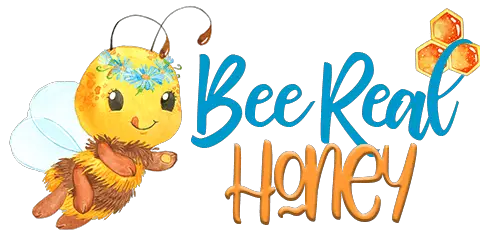*This post may have affiliate links, which means I may receive commissions if you choose to purchase through links I provide (at no extra cost to you). As an Amazon Associate I earn from qualifying purchases. Please read my disclaimer for additional details..
Bees usually prefer floral plants to satisfy their appetite. Bees, like people, need a well-balanced diet to stay healthy.
You may think bees have greater access to healthy food on farms than in cities, but the reality is that bees that live in the cities produce more honey than those in rural regions!
This is because many farms are monocultures, consisting of vast fields of the same crop. A greater diversity of flowers, on the other hand, may be found in urban areas.
If you want to help honeybees, one of the most effective things you can do is plant a wildflower-rich garden with lots of nectar and pollen.
Creating a bee-friendly atmosphere in our gardens, in addition to growing a large number of flowers that attract bees, may help to enhance their overall quality of life.
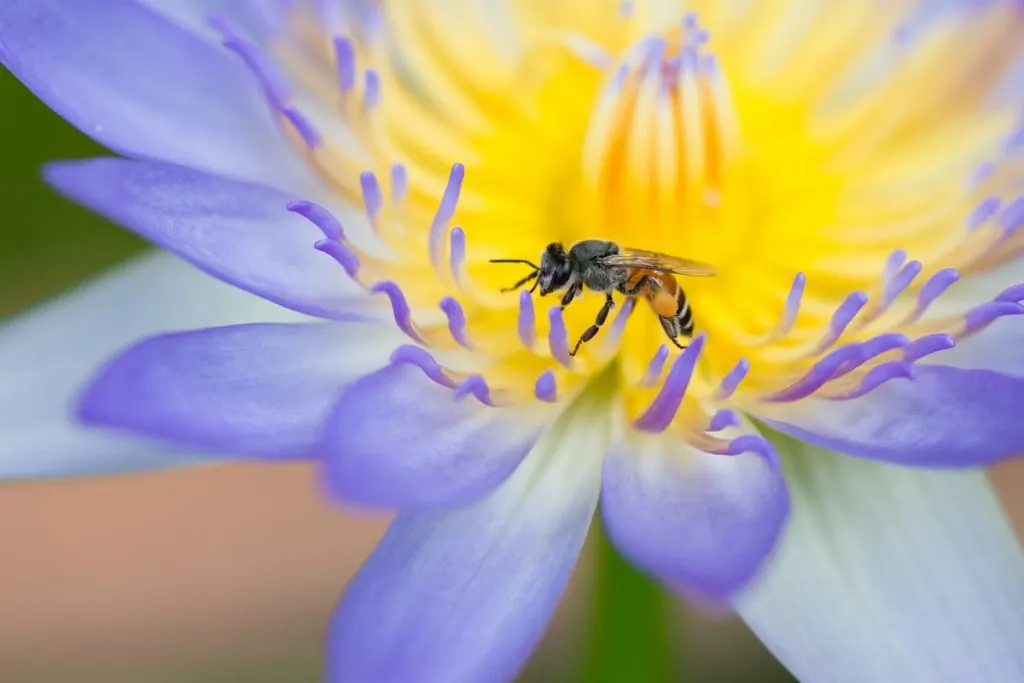
Table of Contents
What is the Purpose of Pollen and Nectar?
Nectar and pollen are the primary sources of nutrition for bees. Pollen is a protein source and fat, while nectar is a source of carbohydrates.
There are times when you observe a bee on a flower, but it is not because the bee is actively attempting to pollinate the crop. That was simply a fortunate coincidence.
What is occurring is that the bee, as well as its colony, is hungry!
Honeybees collect pollen in baskets on the legs and then use their mouths to suck up nectar from blossoms and flowers. Consider this to be the equivalent of them gathering raw materials.
Returning to the hive, the pollen and nectar are collected and placed in cells, where they are converted into honey and a substance known as “bread,” which they will feed to their developing young ones.
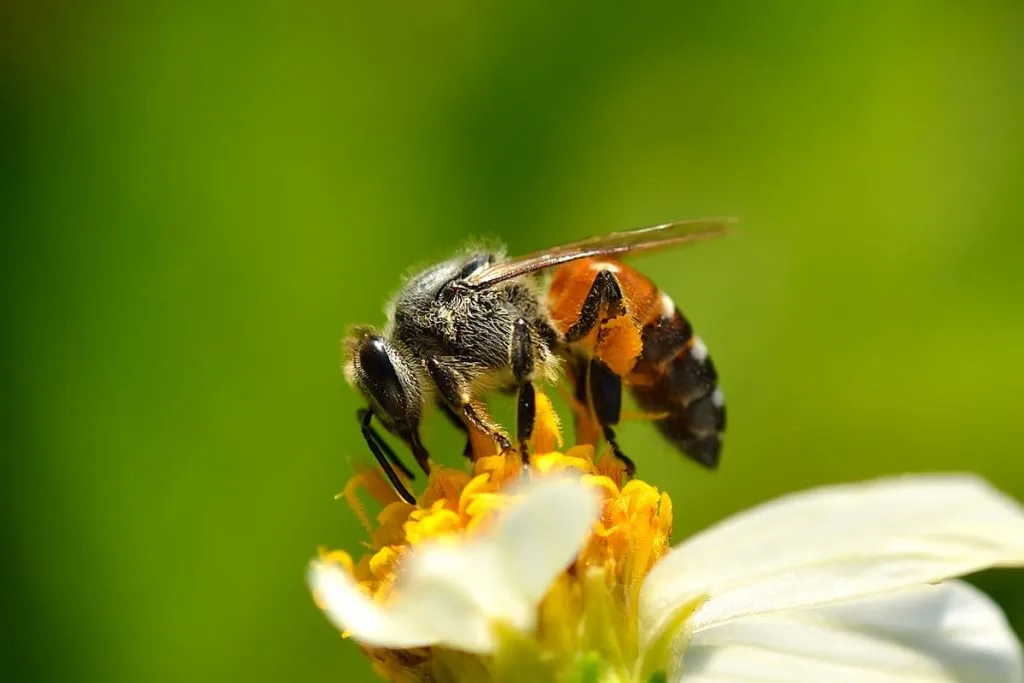
What Characterizes the Best Flowers for Bees?
It provides a balanced nutritional intake. Flowered nectar and pollen, the sole sources of protein and carbohydrates in a bee’s diet, are plentiful in flowering plants that attract bees.
While some bees aren’t fussy about the kind of flower they visit, others, referred to as “specialists,” need pollen from specific plants.
- It is the appropriate color. If you thought that red and yellow were the most popular colors for bees, that’s not the case. They are naturally drawn to flowers in the purple and blue color spectrums because they are more visible to them than blooms in other colors.
Additionally, bees can see UV light, and many flowers have UV nectar indicators that are invisible to humans but direct bees directly to their tasty meal.

- It’s the ideal size and form. Because of the structure of some flowers, certain bees prefer them over others. The size of a bee’s tongue is often a factor in determining its preferences.
The long-tongued bees, for example, will seek out flowers with tubular or deep-throated blossoms. In contrast, the short-tongued species seek out flowers with easily available nectar, for instance, the daisy family.
Small flowers attract honeybees, though bigger bees avoid them since they cannot sustain their weight on such delicate blooms.
- It does not contain any chemicals. Using pesticides on your flowers is not recommended since they are harmful to bees and other helpful insects. Instead, use environmentally friendly remedies and apply them early in the morning or late at night, when fewer bees are around.
Additionally, avoid purchasing plants that have been treated with pesticides, which may be hazardous to bees even in tiny quantities.
- It blossoms at the appropriate time. While spring and summer seem to be the busiest times of year for bees, certain early-emerging bees depend on nectar and pollen from later winter and very early spring flowers to sustain their survival.
Bees gorge themselves on late-blooming flowers in the autumn as they prepare for winter hibernation.
- It has a single flower. Avoid varieties with large, showy double blooms, regardless of their form or size.
Bees find it more challenging to obtain nectar and pollen when many flowers are in a cluster, even though they are attractive.
9 Best Flowers for bees
1. Bee Palm

Flowering occurs from the middle of summer until the beginning of autumn on this perennial plant type. The flower is available in red, white, lavender, and purple.
Also available is spotted bee balm, which has light yellow flowers with purple spots and beautiful pink bracts. Its height is about 2.5 feet, on average.
It attracts the bee because the dense clusters of tiny two-lipped flowers and fragrant green leaves lure pollinators.
This bloom will attract bees, as well as butterflies, to its nectar source. Although this robust plant reseeds quickly, the aromatic leaves offer a pleasant aromatherapy experience when thinned in the spring.
This flower has an additional benefit in that the leaves of this United States native plant may be steeped to create tea, which is a great perk.
2. Catmint
This is a perennial plant with blooming periods ranging from May to September. The color of the flower is either purple or blue. Its height ranges from 8 inches to 2.5 feet.
It attracts bees because it blooms for an extended time and produces a large amount of nectar, making it a plentiful supplier of nectar for honeybees from spring until autumn.
Look for kinds that are well-behaved and will not overwhelm your garden space. The bees will be blessed with blue flowers that bloom on top of silvery foliage throughout the season.
One trim in the middle of the growing season will ensure that this heat and drought-tolerant plant looks impressive throughout the whole growing season.
3. Lavenders

Lavender is a perennial flower that blooms from June to August. Lavender comes in a variety of colors, including purple, white, and pink. In terms of height, it is about 2.5 feet.
It attracts honeybees because it has a sweetly scented fragrance and spikes of tiny blooms that are exactly the perfect size for honeybees to consume.
To grow lavender effectively, it is necessary to have whole light and well-drained soil.
One of its attractions is the fragrance of the leaves and blossoms. The silvery leaves of lavender will remain on the plant even in mild winters, adding to the splendor of the winter garden.
Hardier cultivars, such as Hidcote and Munstead may be planted in zones 5. An added advantage of Lavenders is that while bees are attracted to the flower, deer and rabbits are more likely to avoid this plant.
4. Borage
Borage is an annual plant that blooms from June to August, depending on the variety. It has a vibrant blue color to it. With a total height of about 2.5 feet, it is very outstanding.
In addition to being attractive to honeybees, these nectar-rich blue blooms can regenerate their nectar in minutes after a bee’s consumption, providing a consistent source of nectar for them.
The shallow, star-shaped flowers also serve as excellent food reserves for short-tight bees, who benefit from the surface, star-shaped blooms.
Borage’s bright blue star-shaped blooms stand out in the yard and are a favorite for pollinators.
An additional benefit for Borage is that this will be a lifelong member of the garden and you’ll have a lot of seedlings to share with your family and friends!
5. Sunflower
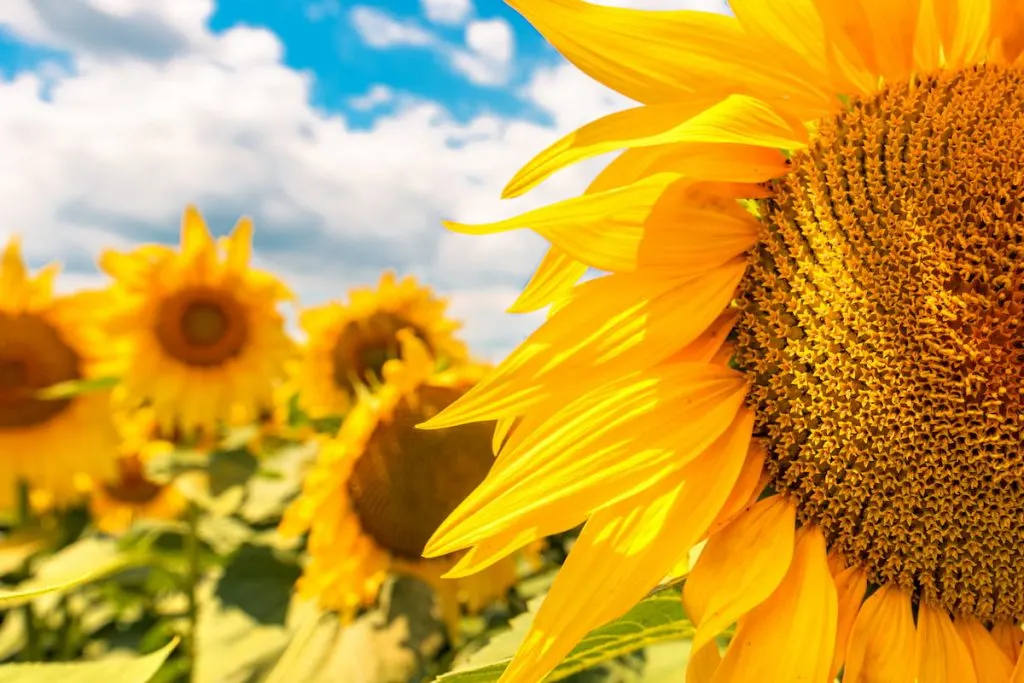
The sunflower plant is an annual or a perennial plant. Its blooming season is from the summer through the autumn. The color of a sunflower is a bright yellow and it may grow to a maximum height of 16 feet.
Despite being prolific providers of nectar and pollen, flowers such as sunflowers have also been proven to have bee-healing qualities.
When bees are sick or afflicted with diseases, they will self-medicate by eating sunflower pollen (the open-pollinated sunflower species rather than hybrid kinds that have been engineered to be pollen-free).
Sunflowers are a favored flower of several bee species, and they attract a large number of them. Sunflowers may be grown nearly everywhere since they are easy to grow and tolerant of a wide range of soil types.
6. White Indigo
White Indigo is a perennial flower that blooms in the spring. White wild indigo grows approximately 3 feet tall and can withstand gravel, clay, and poor soil. This plant thrives in the sun and with just occasional watering, although it can withstand periodic droughts or floods without dying.
It will hibernate for the winter and will not emerge until the following spring.
White wild indigo draws frosted elfin butterflies and the block-spotted conspicuous moth, in addition to bees. If you cannot acquire the wild white indigo specifically, any wild indigo will suffice as a substitute.
7. Coneflower (Purple)

Honeybees and butterflies are drawn to this lovely perennial flower! It is available as a seedling at the majority of garden centers. Ensure that they get enough water till they are established.
If you don’t put it near other plants, it may grow to approximately 4 feet tall. Purple coneflower is a plant that thrives in wet circumstances and does not perform well in dry conditions.
8. Marsh blazing star
Marsh blazing star is a perennial plant that blooms throughout the summer months.
It may take many years for this eye-catching native plant to mature from seed, but the results are well worth the wait. If the thought of beginning from a seed scares you, several internet stores offer bulbs instead of seeds.
9. Wrinkle leaf goldenrod
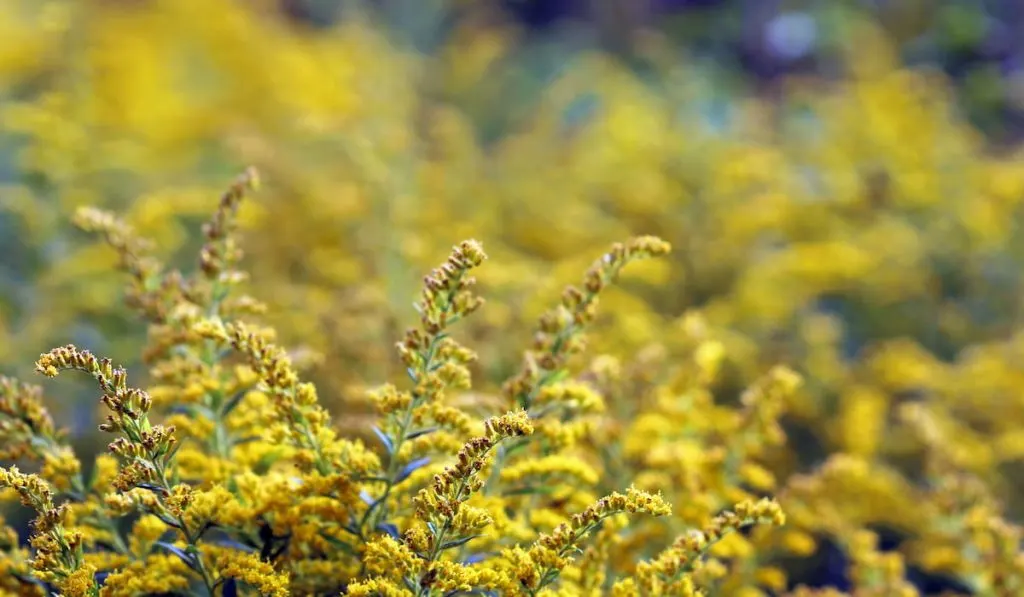
Wrinkle leaf goldenrod is a perennial plant that blooms from the beginning of summer until the end of autumn. In the wild, it is remarkably resilient. It may grow in a variety of soil conditions, including poor and dry soils.
It’s common for people to blame goldenrod for hay fever (also known as seasonal allergies), but they’re confusing it for ragweed, which blooms at the very same time as goldenrod.
Conclusion
Whenever you decide to plant these flowers, bear in mind that most plants that attract bees will need adequate light for at least half of the day when they bloom.
If you don’t have a sunny garden, you may grow your bee flowers in pots and set them out on a sunny patio.
Resources
- https://www.gardenersworld.com/plants/plants-for-bees/
- https://www.birdsandblooms.com/gardening/garden-bugs/top-10-flowers-that-attract-bees/
- https://www.buddhabeeapiary.com/blog/what-flowers-do-honeybees-like
- https://www.gardendesign.com/flowers/bees.html
- https://www.almanac.com/best-flowers-bees
- https://www.southernliving.com/garden/flowers/flowers-for-bees
